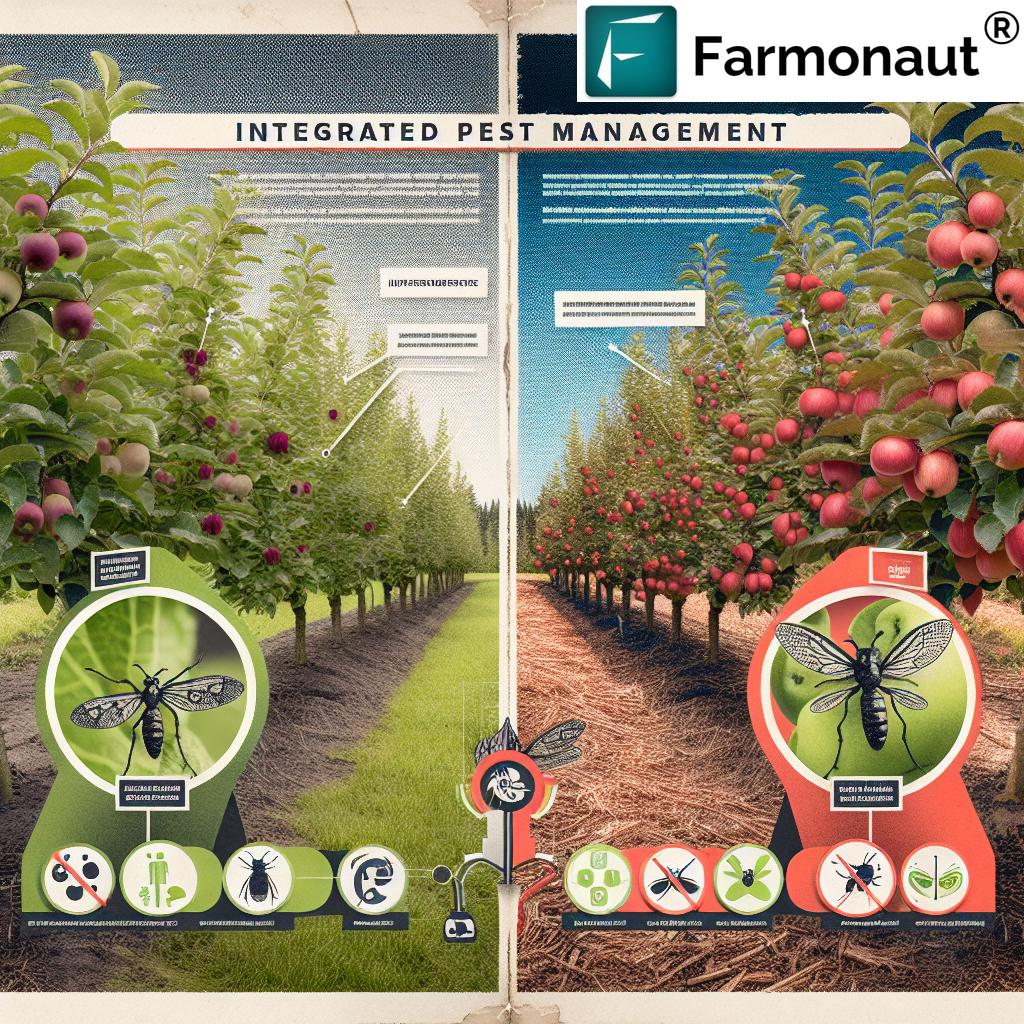Canada-US Trade Tensions: How Tariffs Impact Canadian Agriculture and Economy
“Canada and the US implemented 25% tariffs on merchandise, significantly impacting North American trade dynamics.”
In recent developments that have sent shockwaves through North American trade relations, we find ourselves at the epicenter of escalating Canada-US trade tensions. The implementation of 25% tariffs on merchandise by both nations has reshaped the economic landscape, prompting a cascade of consequences that reverberate across various sectors, particularly agriculture. As we delve into this complex issue, we’ll explore the far-reaching implications of these tariffs on Canadian agriculture and the broader economy, examining the strategies being employed to navigate these turbulent waters.
The Catalyst: Understanding the Tariff Implementation
The current trade dispute between Canada and the United States marks a significant shift in the long-standing economic relationship between these two nations. At the heart of this tension lies the mutual implementation of 25% tariffs on a wide array of goods. This move has effectively reshaped North American trade dynamics, creating a ripple effect that touches nearly every aspect of cross-border commerce.
For Canada, this means imposing tariffs on approximately $155 billion worth of American products. The list is diverse, encompassing everything from alcohol and furniture to natural resources. This retaliatory measure comes in direct response to the United States’ decision to levy similar tariffs on Canadian goods, a move that has sent both nations scrambling to adjust their economic strategies.

The Canadian Response: A Call for Domestic Support
In light of these developments, Canadian Prime Minister Justin Trudeau has taken a decisive stance, urging citizens to prioritize domestic products. This “Canada first” approach is more than just a patriotic call to action; it’s a strategic move aimed at bolstering the national economy during these challenging times. Trudeau’s encouragement for Canadians to “check the labels” and opt for locally produced goods is part of a broader initiative to strengthen Canadian industries and mitigate the impact of the tariffs.
This push for domestic consumption aligns with a comprehensive strategy to reinforce Canada’s economic resilience. It includes potential emergency tax cuts, job creation initiatives in key sectors such as plumbing and mining, and efforts to dismantle interprovincial trade barriers. These measures are designed to create a more robust and self-reliant Canadian economy, capable of weathering the storm of international trade disputes.
The Stakes: Analyzing the Economic Impact
The implications of these tariffs are profound and far-reaching. David McCall, leader of the United Steelworkers union, has highlighted the staggering scale of Canada-US trade, noting that approximately $1.3 trillion worth of goods cross the border annually. This figure underscores the immense stakes involved in this trade dispute.
The potential consequences are dire:
- Job security in both nations is at risk
- Prices for consumers are likely to increase
- Economic instability looms for businesses reliant on cross-border trade
McCall advocates for a more nuanced approach to trade issues, suggesting that instead of blanket tariffs, the United States should implement focused measures targeting nations that violate trade regulations. This perspective emphasizes the importance of maintaining strong relationships with allies, rather than adopting policies that could damage essential diplomatic and economic ties.
The Agricultural Sector: A Closer Look at the Impact
Among the various sectors affected by these tariffs, agriculture stands out as particularly vulnerable. The Canadian Federation of Agriculture has expressed deep concern over the impending tariffs, predicting adverse effects for both farmers and consumers across North America.
Keith Currie, president of the Canadian Federation of Agriculture, articulates the sector’s apprehension:
- Farmers face potential price increases for inputs and equipment
- Export markets may become less accessible or profitable
- Consumers might see higher prices for food products
These challenges come at a time when the agricultural sector is already grappling with various pressures, including climate change and shifting global demand patterns. The addition of trade tensions further complicates an already complex landscape for Canadian farmers.
Comparative Impact of 25% Tariffs on Canadian Agriculture
| Agricultural Sector | Estimated Annual Export Value (Pre-Tariff) | Projected Export Value (Post-Tariff) | Potential Job Impact | Adaptation Strategies |
|---|---|---|---|---|
| Dairy | $500 million | $375 million | -2,000 jobs | Diversify export markets, increase domestic consumption |
| Beef | $2.5 billion | $1.875 billion | -5,000 jobs | Enhance value-added processing, explore new international markets |
| Grains | $3 billion | $2.25 billion | -3,500 jobs | Invest in storage facilities, develop new grain varieties |
| Fruits/Vegetables | $1 billion | $750 million | -2,500 jobs | Increase greenhouse production, focus on high-value crops |
| Total Impact | $7 billion | $5.25 billion | -13,000 jobs | Comprehensive sector-wide adaptation and innovation |
This table illustrates the potential scale of impact across major agricultural sectors in Canada. It’s important to note that these figures are estimates and may vary based on market conditions and policy responses. The adaptation strategies highlight potential ways forward for each sector, emphasizing the need for innovation and flexibility in the face of these trade challenges.
The Role of Technology in Navigating Trade Challenges
In these uncertain times, the role of technology in agriculture becomes increasingly crucial. Farmonaut’s remote sensing technology offers a beacon of hope for agricultural stakeholders looking to optimize their operations and enhance yields. By leveraging advanced satellite imagery and AI-driven insights, farmers can make more informed decisions about crop management, potentially mitigating some of the economic pressures brought on by the trade tensions.
Farmonaut’s platform provides several key benefits:
- Real-time crop health monitoring
- AI-based advisory systems for optimized resource management
- Blockchain-based traceability for enhanced supply chain transparency
These technologies can help Canadian farmers adapt to the changing economic landscape by improving efficiency and potentially opening up new markets through improved product traceability and quality assurance.
The Broader Economic Strategy
Conservative Leader Pierre Poilievre has called for a comprehensive “Canada first” strategy to address the economic challenges posed by the tariffs. This approach includes several key components:
- Implementing counter-tariffs targeting specific U.S. sectors
- Proposing emergency tax cuts for Canadians
- Launching job creation initiatives in strategic industries
- Dismantling interprovincial trade barriers to enhance domestic commerce
- Strengthening Canada’s military and border security
These measures aim to create a more resilient Canadian economy, capable of withstanding external pressures while promoting internal growth and development. The focus on removing interprovincial trade barriers is particularly noteworthy, as it could help create a more unified and efficient national market.
International Dynamics: The Canada-Mexico Connection
Amidst the tensions with the United States, Canada is strengthening its ties with Mexico. Prime Minister Trudeau’s office has reported ongoing communication with Mexican President Claudia Sheinbaum regarding the implications of U.S. tariffs on both nations. This dialogue extends beyond trade issues, encompassing:
- Enhanced border security measures
- Collaborative efforts to address drug trafficking
- Exploration of further economic cooperation
This burgeoning Canada-Mexico cooperation represents a strategic pivot, potentially offering both nations alternative trade avenues and a united front in negotiating with the United States. It underscores the complex, multilateral nature of North American economic relations.
Sector-Specific Impacts and Adaptations
While agriculture is significantly affected, the impact of these tariffs extends across various sectors of the Canadian economy. Each industry faces unique challenges and opportunities in this new trade environment:
Manufacturing
The manufacturing sector, particularly in industries like automotive and machinery, faces increased costs for raw materials and potential disruptions to integrated supply chains. Adaptation strategies include:
- Diversifying supplier networks
- Investing in automation to reduce labor costs
- Exploring new export markets beyond the United States
Energy
Canada’s energy sector, a significant component of U.S.-Canada trade, may see shifts in demand and pricing. Strategies for this sector include:
- Accelerating the transition to renewable energy sources
- Enhancing pipeline infrastructure for domestic distribution
- Developing new international partnerships for energy export
Technology and Innovation
The tech sector, while less directly impacted by physical trade barriers, may face challenges in terms of talent mobility and cross-border collaborations. Opportunities in this sector include:
- Fostering domestic tech hubs and innovation centers
- Leveraging remote work technologies to access global talent
- Developing technologies that address new trade and supply chain challenges
“Canadian farmers face potential price increases and economic instability due to trade tensions with the United States.”
The Consumer Perspective
As these trade tensions unfold, Canadian consumers find themselves at the crossroads of economic patriotism and potential price hikes. The encouragement to “check the labels” and prioritize Canadian-made products comes with several considerations:
- Potential increase in prices for everyday goods
- Shift in consumer behavior towards more locally-sourced products
- Heightened awareness of product origins and supply chains
This situation presents an opportunity for Canadian businesses to capitalize on the growing demand for domestic products. However, it also poses challenges in terms of maintaining affordability and variety for consumers.
The Role of Government Support and Policies
As the trade situation evolves, the Canadian government’s role in supporting affected industries and workers becomes increasingly crucial. Potential policy measures include:
- Targeted financial support for sectors most impacted by tariffs
- Investment in job retraining programs for affected workers
- Enhanced support for export diversification initiatives
- Review and potential reform of domestic trade policies to enhance competitiveness
These measures aim to cushion the economic impact of the tariffs while positioning Canadian industries for long-term success in a changing global trade landscape.
Long-Term Implications for North American Trade
The current trade tensions between Canada and the United States may have lasting effects on North American trade dynamics. Potential long-term implications include:
- Reshaping of supply chains to reduce dependency on cross-border trade
- Increased focus on domestic production and self-sufficiency
- Potential renegotiation of trade agreements to address new economic realities
- Shift in strategic alliances and trade partnerships within and beyond North America
These changes could fundamentally alter the economic landscape of the continent, potentially leading to a more diversified and resilient trade structure in the long run.
The Path Forward: Strategies for Adaptation and Growth
As Canadian industries navigate these challenging waters, several strategies emerge as potential pathways to adaptation and growth:
1. Diversification of Export Markets
Exploring new international markets can help reduce dependency on U.S. trade. This might involve:
- Strengthening ties with emerging economies
- Leveraging existing trade agreements with other nations
- Investing in market research and export promotion in new regions
2. Innovation and Technology Adoption
Embracing technological advancements can enhance competitiveness and efficiency. This includes:
- Implementing advanced manufacturing techniques
- Adopting precision agriculture technologies like those offered by Farmonaut
- Investing in research and development for product innovation
3. Enhancing Domestic Value Chains
Strengthening internal supply chains can reduce vulnerability to external trade disruptions:
- Promoting inter-provincial trade and collaboration
- Developing local alternatives to imported inputs
- Fostering partnerships between Canadian businesses across sectors
4. Upskilling and Workforce Development
Preparing the Canadian workforce for evolving economic needs:
- Investing in education and training programs aligned with emerging industries
- Promoting skills transferability across sectors
- Supporting entrepreneurship and innovation in small and medium enterprises
By implementing these strategies, Canadian industries can not only weather the current trade storm but potentially emerge stronger and more resilient in the global marketplace.
The Role of Data and Analytics in Trade Strategy
In navigating the complex landscape of international trade, data and analytics play a crucial role. Tools like Farmonaut’s satellite-based monitoring and AI-driven insights can provide valuable information for decision-makers across industries. The benefits of leveraging such technologies include:
- More accurate forecasting of agricultural yields and market trends
- Enhanced ability to adapt to changing market conditions in real-time
- Improved resource allocation and risk management
- Data-driven negotiation strategies for trade agreements
By harnessing the power of data, Canadian businesses and policymakers can make more informed decisions, potentially mitigating some of the negative impacts of trade tensions while capitalizing on new opportunities.
Earn With Farmonaut: Affiliate Program
Earn 20% recurring commission with Farmonaut’s affiliate program by sharing your promo code and helping farmers save 10%. Onboard 10 Elite farmers monthly to earn a minimum of $148,000 annually—start now and grow your income!
The Importance of Sustainable Practices in Trade Resilience
As trade dynamics shift, the importance of sustainable practices in agriculture and other industries becomes increasingly apparent. Sustainable approaches can enhance resilience to market fluctuations and provide long-term competitive advantages. Key aspects include:
- Adoption of environmentally friendly production methods
- Development of sustainable supply chains
- Investment in renewable energy and resource-efficient technologies
- Emphasis on product traceability and ethical sourcing
These practices not only align with growing consumer preferences but can also open up new market opportunities and enhance brand value in both domestic and international markets.
The Future of North American Economic Cooperation
While current tensions pose significant challenges, they also present an opportunity to reimagine and strengthen North American economic cooperation. Potential avenues for future collaboration include:
- Development of joint strategies for global competitiveness
- Collaborative research and development initiatives
- Harmonization of regulatory standards to facilitate smoother trade
- Joint efforts in addressing shared challenges like climate change and cybersecurity
By focusing on these areas of mutual interest, Canada, the United States, and Mexico can work towards a more integrated and resilient North American economy, better equipped to face global challenges and opportunities.
Conclusion: Navigating the New Trade Landscape
The current Canada-US trade tensions, marked by the implementation of 25% tariffs, have undoubtedly created a complex and challenging economic environment. However, as we’ve explored throughout this analysis, these challenges also present opportunities for innovation, adaptation, and growth.
Key takeaways include:
- The need for a multifaceted approach to economic resilience, combining government policy, industry innovation, and consumer engagement
- The critical role of technology and data analytics in navigating trade challenges, as exemplified by platforms like Farmonaut
- The importance of diversification in both export markets and domestic production capabilities
- The potential for strengthened regional cooperation, particularly between Canada and Mexico
- The opportunity to reimagine and strengthen North American economic ties in the long term
As Canadian industries, particularly agriculture, adapt to these new realities, the focus on innovation, sustainability, and strategic collaboration will be key to not just surviving but thriving in this new trade landscape. By leveraging advanced technologies, fostering domestic strengths, and maintaining a flexible approach to international partnerships, Canada can position itself for success in an evolving global economy.
FAQ Section
Q: How will the 25% tariffs affect everyday Canadian consumers?
A: Consumers may see increased prices on a variety of goods, particularly those imported from the U.S. or those that rely on American components. This could impact everything from food prices to the cost of manufactured goods.
Q: What steps can Canadian farmers take to mitigate the impact of these tariffs?
A: Farmers can explore diversifying their export markets, focus on domestic sales, adopt cost-saving technologies like Farmonaut’s precision agriculture solutions, and potentially shift to crops or products less affected by the tariffs.
Q: How might these trade tensions affect Canada’s relationship with other trading partners?
A: These tensions could lead Canada to strengthen ties with other trading partners, particularly Mexico and countries in Europe and Asia, as a way to reduce dependency on the U.S. market.
Q: What role can technology play in helping businesses adapt to these new trade dynamics?
A: Technology, such as Farmonaut’s satellite-based monitoring and AI-driven insights, can help businesses optimize operations, reduce costs, and make data-driven decisions to navigate market changes more effectively.
Q: How long are these tariffs expected to remain in place?
A: The duration of these tariffs is uncertain and depends on ongoing negotiations and political developments between Canada and the U.S. Businesses should prepare for both short-term impacts and potential long-term shifts in trade dynamics.
As we continue to monitor these developments, staying informed and adaptable will be crucial for businesses and consumers alike. The landscape of Canada-US trade is evolving, and with it comes both challenges and opportunities for those ready to navigate this new economic terrain.
















